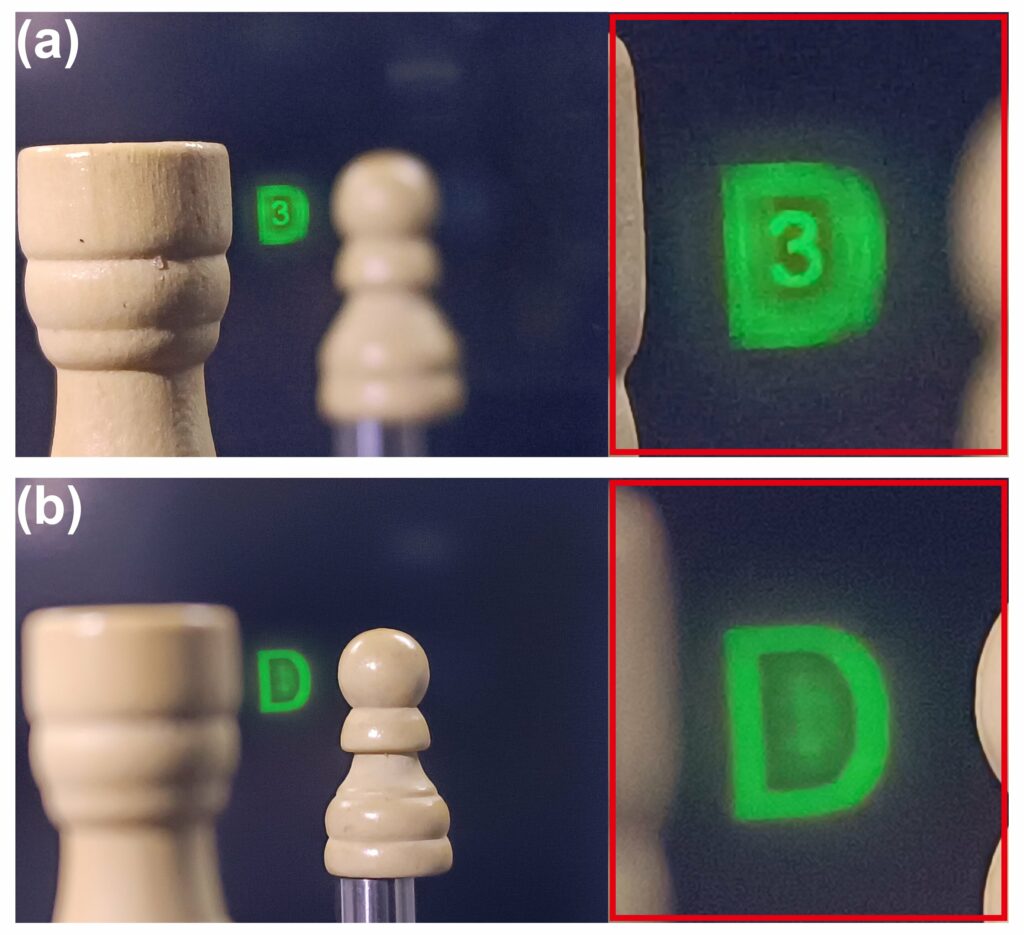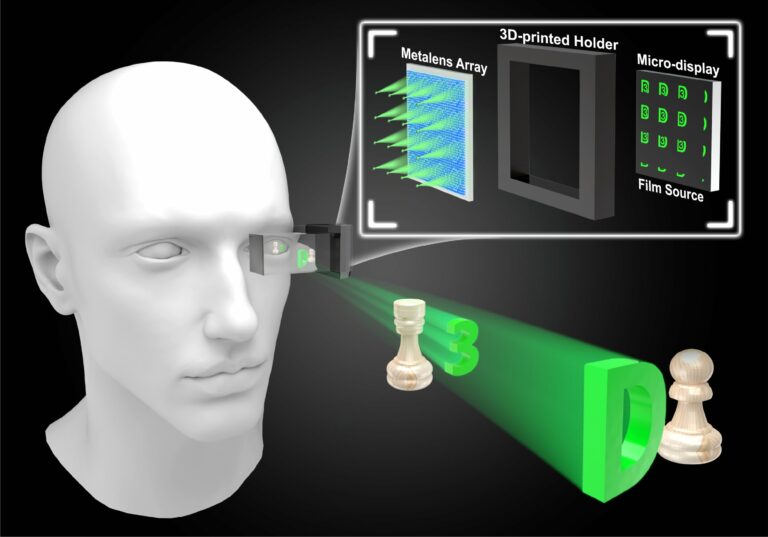Metalens Array Empowers the Next Era of Genuine 3D Near-Eye Displays
Integral imaging (II) display is a highly promising near-eye display (NED) due to its compact size, full parallax, convenient full-color display, and most importantly, its ability to provide true 3D and more realistic depth perception by eliminating the vergence-accommodation conflict (VAC). However, II displays based on conventional optical architecture, such as microlens arrays, have limitations in terms of resolution, field of view, and depth of field.
With the increasing pixel densities of micro-displays, the conventional optical architecture is unable to effectively manipulate light at the pixel level. Meta-optics, on the other hand, offers a solution to overcome these limitations by providing unprecedented flexibility in pixel-level light manipulation through a monolithic device. The development of Meta-II display is expected to be a significant step towards the next generation of virtual reality (VR) and augmented reality (AR), creating more immersive experiences.
However, there are several challenges that need to be addressed before Meta-II displays can become mainstream in the field of NED. One challenge is the size of the metalens array, a critical component of the Meta-II display, which is currently too small to match the high-resolution micro-displays available in the commercial market. This is due to the underdevelopment of large-area, higher-precision nanofabrication technology.
Another challenge is the computational expense of rendering high-resolution wearable NEDs. The elemental image array (EIA), which serves as the signal input for the Meta-II display, needs to be calculated for every viewpoint, requiring the use of GPUs for acceleration.
Fortunately, recent advancements in nanofabrication and II algorithms have opened up possibilities for practical Meta-II displays. As these challenges are overcome, Meta-II displays are expected to revolutionize VR/AR displays and become the standard for these technologies, enhancing how people interact with them.
A novel true-3D technical architecture named meta-II NED has been developed by a team of scientists led by Professor Jian-Wen Dong and Zong Qin from Sun Yat-sen University. In their recent publication in eLight, they successfully integrated meta-optics and II displays, marking a significant milestone in the practical implementation of NED.

The meta-II NED incorporates a high-pixel-density micro-display and a metalens array. The metalens array is made of high-refractive-index nanoimprint glue and is fabricated using large-area nanoimprint technology. It has a minimum feature size of around 100 nm and a maximum nanostructure height of about 500 nm.
Nanoimprint technology allows for quick replication of metalens array samples, especially large-area ones, compared to electron beam lithography.
The low-cost and large-area nanoimprint fabrication process enables mass production of metalens arrays. To complement this architecture, a new real-time rendering method was developed to generate the EIA with an average frame rate of 67 FPS by utilizing the invariant voxel-pixel mapping.
The experimental verification of true-3D display was achieved through monocular focus cues and motion parallaxes. The meta-II NED module also creates a see-through effect by merging 3D images with surrounding objects, showcasing the broader potential of the meta-II display for augmented reality.
The research team has pioneered the development of true-3D NED by combining meta-optics and II displays. The design flexibility of metalens arrays holds promise for addressing long-standing issues in conventional II architectures. For instance, the extended depth of field is crucial for presenting images from the person space to the vista space in true-3D NEDs, which is limited by microlens arrays.
In contrast, a metalens array can be easily designed as a polarization multiplexing element with varying focal lengths to extend the depth of field. Furthermore, the meta-II architecture offers a potential solution to increase the field of view (FOV). Slim metalens arrays can record freeform phase profiles that precisely compensate for the field-dependent aberration of conventional microlens arrays, enabling an expanded FOV for further study.
Furthermore, it is crucial to note that the extended-depth-of-field and FOV-expanded meta-II architectures do not incur any additional computational complexity or system volume when compared to the aforementioned meta-II. Overall, metalens arrays play a pivotal role in facilitating the development of cutting-edge true-3D near-eye displays for the next generation.
This article is republished from PhysORG under a Creative Commons license. Read the original article.
Do not forget to share your opinion with us to provide you with the best posts !




0 Comments